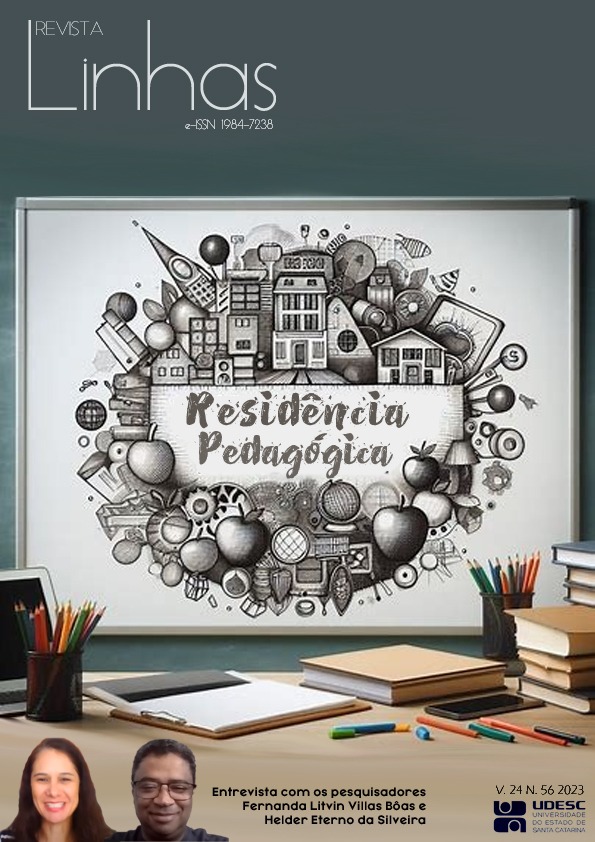Thematic development: methodological contributions of bibliometry and scientometry to literature reviews
DOI:
https://doi.org/10.5965/1984723824562023228Keywords:
methodology, research design, bibliometrics, scientometry, actor-network theoryAbstract
Research on scientific knowledge, which has scientific research as the object of knowledge, can be carried out using methods and techniques specific to information science. Nevertheless, these methods and techniques receive criticism for being supposedly dichotomous, descriptive and operating for superficial understandings. We then ask ourselves: Would it be possible to propose a research design that addresses the construction of knowledge in which the description, understanding and context that drive this production are intertwined? What techniques and methods would be used? How could this research design operate based on research questions? Contributing to mitigate these shortcomings, this study's main goal: presents a research design proposal that makes it possible to gather the description, understanding and context for investigating scientific productions. With the other objectives: a) present and discuss the techniques / methods for this research design; b) explain the possibilities of using methods/techniques that are associated with the proposed research design. In the article, we bring together a series of methods and techniques, proposing a research design that comprises the scientific construction of knowledge as an agent of knowledge, which acts in a global network, which can be described, understood and analyzed under multiple perspectives by researchers and researchers. This research design presents, as its main advantages, a form of analysis with greater depth, through the use of free software exemplified in the body of the text, which informs us of the current state of the research field, helping us in the construction of new research questions.
Downloads
References
AGRESTI, Alan; FINLAY, Barbara. Métodos estatísticos para as ciências sociais. 4. ed. Porto Alegre: Penso, 2012.
ARAÚJO, Carlos Alberto. Bibliometria: evolução histórica e questões atuais. Em Questão, Porto Alegre, v. 12, n. 1, p. 11-32, jan./jun. 2006.
ARIA, Massimo; CUCCURULLO, Corrado. Bibliometrix: an R-tool for comprehensive science mapping analysis. Journal of Informetrics, Taipei, v. 11, n. 4, p. 959-975, nov. 2017.
COORDENAÇÃO DE APERFEIÇOAMENTO DE PESSOAL DE NÍVEL SUPERIOR – CAPES. Portal de Periódicos. Web of Science. [Brasília, DF: Capes], c2018. Disponível em: https://www.periodicos.capes.gov.br/?option=com_pcollection&mn=70&smn=79&cid=81. Acesso em: 22 Set. 2018.
CAVALCANTE, Ricardo Bezerra; ESTEVES, Cristiano José da Silva; PIRES, Mariana Calisto de Assis; VASCONCELOS, Daniela Dias; FREITAS, Mónica de Melo; MACEDO, Antonio Sávio de. A teoria ator-rede como referencial teórico-metodológico em pesquisas em saúde e enfermagem. Texto contexto - enferm., Florianópolis, v. 26, n. 4, e0910017, 2017. Disponível em: https://doi.org/10.1590/0104-07072017000910017. Acesso em: 20 abr. 2022.
CRESWELL, John W. Educational research: planning, conducting, and evaluating quantitative and qualitative research. 4th. ed. Boston: Pearson, 2012.
FALAGAS, Matthew E.; PITSOUNI, Eleni I.; MALIETZIS, George A.; PAPPAS, Georgious. Comparison of PubMed, Scopus, Web of Science, and Google Scholar: strengths and weaknesses: scientific databases, pros and cons. The FASEB Journal, Rockville, v. 22, n. 2, fev. 2008.
FILIPPO, Daniela; FERNÁNDEZ, María Teresa. Bibliometría: importancia de los indicadores bibliométricos. In: EL ESTADO DE LA CIENCIA: principales indicadores de ciencia y tecnología Iberoamericanos/ interamericanos. Buenos Aires: Artes Gráfica Integradas, 2002. p. 1-10.
FONTANELLA, Bruno Jose Barcellos; LUCHESI, Bruna Moretti; SAIDEL, Maria Giovana Borges; RICAS, Janete; TURATO, Egberto Ribeiro; MELO, Débora Gusmão. Amostragem em pesquisas qualitativas: proposta de procedimentos para constatar saturação teórica. Cadernos de Saúde Pública, Rio de Janeiro, v. 27, n. 2, p. 389-394, fev. 2011.
LATOUR, Bruno. Um coletivo de humanos e não humanos: no labirinto de Dédalo. In: LATOUR, Bruno. A esperança de Pandora. Bauru: Edusc; 2001. p. 201-237.
LEMIEUX, Vicent; OUIMET, Mathieu. Análise estrutural das redes sociais. 2. ed. Lisboa: Instituto Piaget, 2012.
MATHEUS, Renato Fabiano; SILVA, Antonio Braz de Oliveira. Análise de redes sociais como método para a ciência da informação. DataGramaZero - Revista de Ciência da informação, Porto Alegre, v. 7, n. 2, p. 72-93, abr. 2006.
NETTO, Paulo Oswaldo Boaventura. Grafos: teoria, modelos, algoritmos. São Paulo: Edgard Blücher, 2003.
RAFOLS, Ismael; PORTER, Alan ; LEYDESDORFF, Loet. Science overlay maps: a new tool for research policy and library management. Journal of the American Society for Information Science & Technology, Syracuse, v. 61, n. 9, p. 1871-1887, ago. 2010.
RIEHMANN, Patrick; HANFLER, Manfred; FROEHLICH, Bernd. Interactive sankey diagrams. In: IEEE SYMPOSIUM ON INFORMATION VISUALIZATION 2005. Minneapolis: INFOVIS 2005.
ROMANCINI, Richard. A bibliometria na (e além da) avaliação. Em questão, Porto Alegre, v. 23, n. 3, p. 300-305, set./dez. 2017.
SANTOS, Raimundo Nonato de Macedo dos; KOBASHI, Nair Yumiko. Bibliometria, cientometria, infometria: conceitos e aplicações: tendências da pesquisa brasileira em ciência da informação. Pesq. bras. Ci. Inf., Brasília, v. 2, n. 1, p. 155-172, jan./dez. 2009.
SILVA, José Aparecido da; BIANCHI, Maria de Lourdes Pires. Cientometria: a métrica da ciência. Paidéia, Ribeirão Preto, v. 11, n. 21, p. 5-10, 2001.
SILVA, Márcia Regina da; HAYASHI, Carlos Roberto Massao; HAYASHI, Maria Cristina Piumbato Innocentini. Análise bibliométrica e cientométrica: desafios para especialistas que atuam no campo. InCID: Revista de Ciência da Informação e Documentação, São Paulo, v. 2, n. 1, p. 110-129, jun. 2011.
SIMATUPANG, Togar M.; SRIDHARAN, Ramaswami. The collaboration index: a measure for supply chain collaboration. International Journal of Physical Distribution & Logistics Managemente, Verona, v. 35, n. 1, p. 44-62, jul. 2004.
Downloads
Published
How to Cite
Issue
Section
License
Copyright (c) 2023 Revista Linhas

This work is licensed under a Creative Commons Attribution-NonCommercial-NoDerivatives 4.0 International License.
Os artigos publicados pela revista são de uso gratuito, destinados a aplicações educacionais e não comerciais. Os direitos autorais são todos cedidos à revista. Os artigos cujos autores são identificados representam a expressão do ponto de vista de seus autores e não a posição oficial da Revista Linhas ou do Programa de Pós-Graduação em Educação da Universidade do Estado de Santa Catarina.

A Revista Linhas está licenciada com uma Licença Creative Commons - Atribuição-NãoComercial-SemDerivações 4.0 Internacional.


